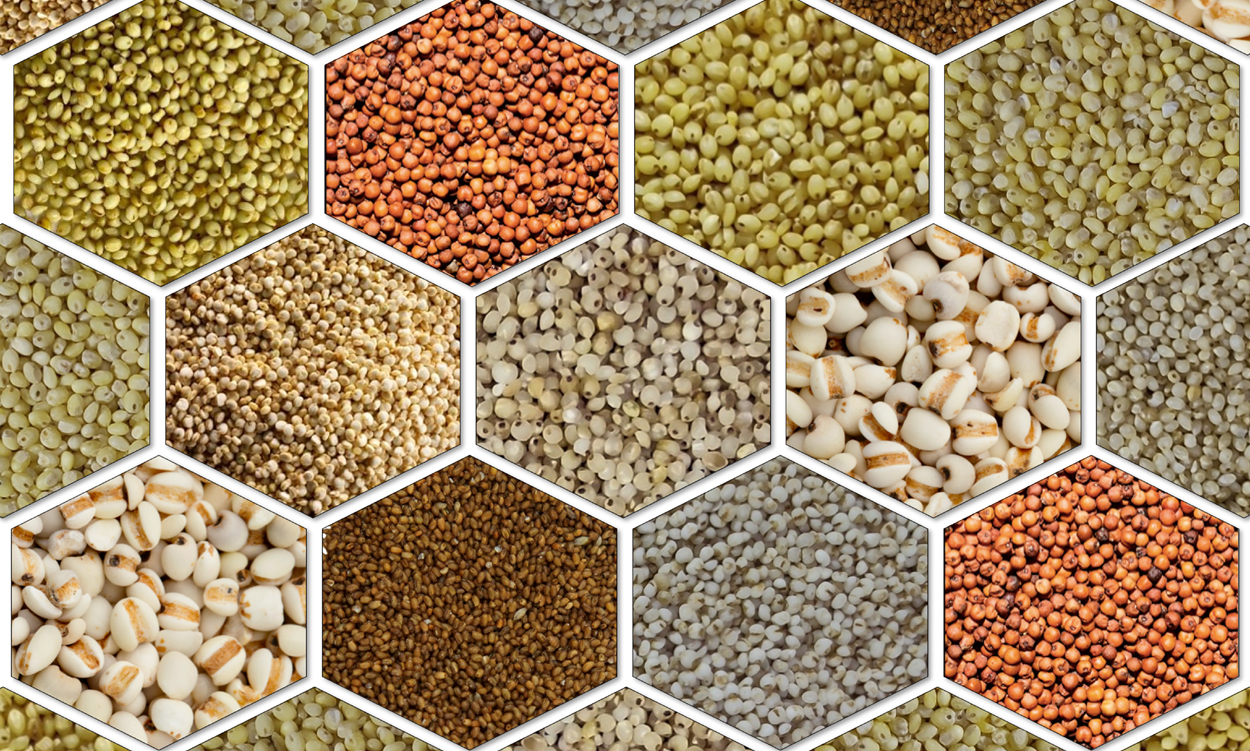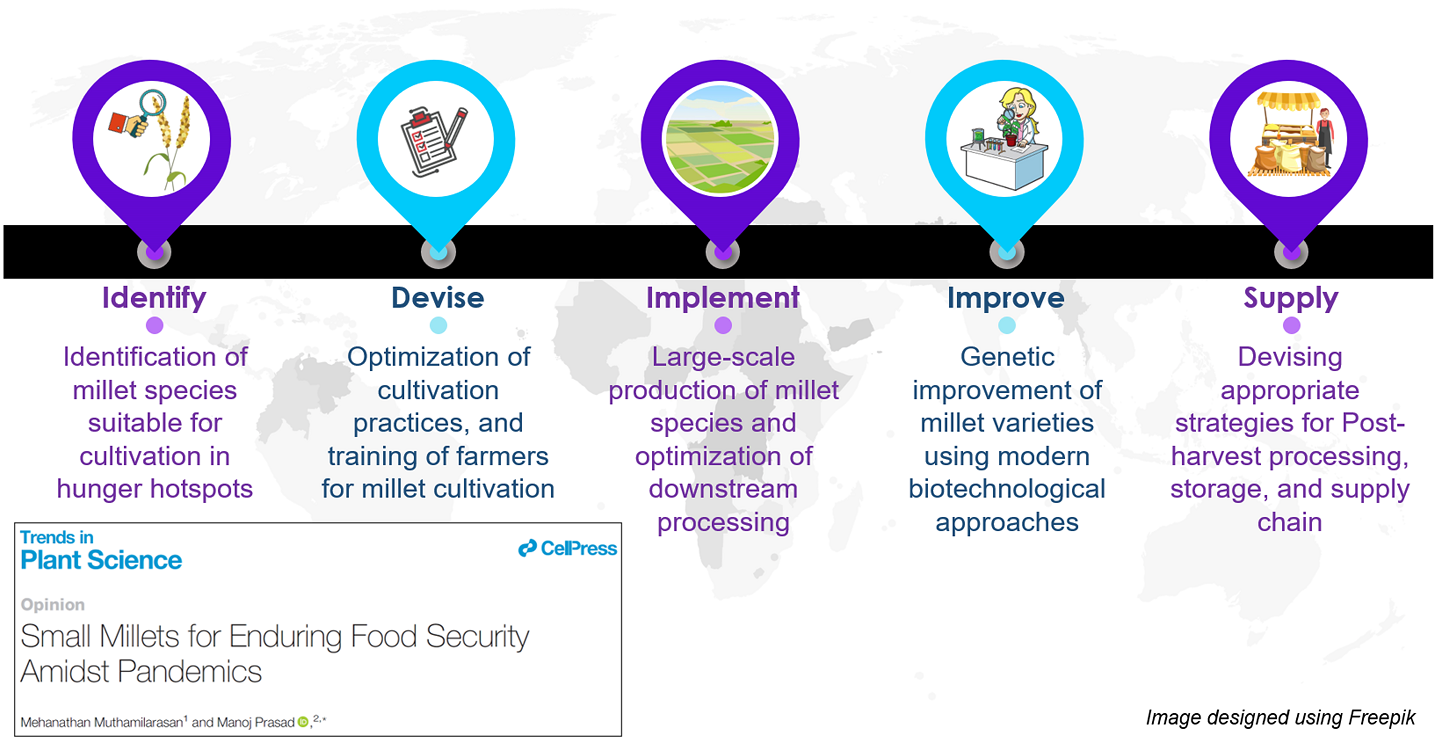
A recent opinion piece published in ‘Trends in Plant Science’ calls for an open debate on mainstreaming small millets to address the prevailing food and nutritional insecurities.
SEP 08, 2020 | BY MANOJ PRASAD & M. MUTHAMILARASAN
The Global Report on Food Crises 2020 has shown that 135 million people in 55 countries are suffering from acute food insecurity. The recent estimates of the United Nations World Food Programme underline that this number would have doubled post-COVID-19 pandemic. The Projected Poverty Impacts of COVID-19 released by the World Bank Group predicts a drastic increase in global extreme poverty rates up to 8.82%, which would wipe out the progress made since 2017 to eradicate poverty.
Food is one of the three basic needs of a human; however, there is a considerable disparity in access to food among the global population. Prior to the incidence of COVID-19, the estimates were showing that one in ten among us goes to bed without food, a child dies out of hunger-related issues in every 10 seconds, and one in four of the world’s children suffer from malnutrition. These numbers would have terrifically gone up during the last six to eight months since the first incidence of COVID-19 was reported.
On the other hand, the population is growing at an exploding rate, and it is projected to reach 10 billion by 2050. To cater the food and nutritional requirements of this population, all we have is fifteen plants and five animal species that are being consumed to date. Among the fifteen plant species, three crops viz., rice, wheat, and maize contribute to >60% of the world’s food, and this overdependence on just three crops is the prime reason for food insufficiency. Around 7.8 billion humans with a growing number of poor on one side and having only three crops to feed this population on the other apparently shows a gap that could not be filled to address food and nutritional insecurities, unless some innovative approaches are deployed in immediate effect.
One of the amenable approaches to mend this gap is to promote diversity in the diet. Efforts to reduce the overdependence on rice, wheat and maize, and promoting the cultivation and consumption of different other crop species will promisingly address the food and nutritional security. Given this, the article published in ‘Trends in Plant Science’ emphasizes on the mainstreaming of small millets by putting forth four valid reasons. (i) Three crops, namely rice, wheat and maize that cater more than 60% of the global food requirements, had become ‘major crops.’ This is one of the prime reasons for food and nutritional insecurity in the regions (hunger hotspots) where these crops are largely imported for consumption. However, agricultural data from different countries indicate that one or the other millet is being cultivated in those hotspots, and therefore, mainstreaming such millets at the hotspots would offer an immediate solution to food insecurity. (ii) Small millets are nutritionally superior to other major crops, and so, they have the potential of addressing not only hunger but also mal- and under-nutrition. (iii) Unlike major crop plants, millets require low agri-inputs like synthetic fertilizers, pesticides, weedicides, etc. (iv) Being C4 species, millets also possess better water- and nitrogen-use efficiencies making them suitable for their cultivation in arid and semi-arid regions.

Reference:
Small Millets for Enduring Food Security Amidst Pandemics


Assistant Professor, School of Life Sciences, University of Hyderabad